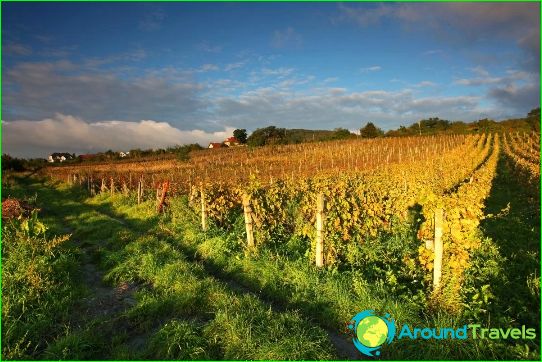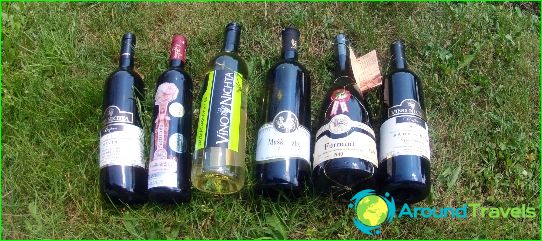Wines of Slovakia

Numerous vineyards are as faithful a sign of the Slovak landscape as mountains and ancient castles. For the first time, the vine appeared in these parts five thousand years ago, and today the wines of Slovakia are in constant demand not only among local residents, but also among guests of the country..
History with geography
Vineyards appeared on Slovak soil thanks to Roman legionnaires. Marcus Aurelius encouraged winemaking in every possible way, and therefore during his reign, viticulture flourished. The land was cultivated by soldiers of numerous legions, which, according to the emperor, strengthened discipline in the army..
Winemakers continued the ancient Roman traditions in the Middle Ages. Wine was used in those years and during divine services, and for the treatment of ailments, and for the amusement of the people on holidays..
Today, more than forty varieties of grapes are grown for wine production in Slovakia, and the most prolific regions are the south of the country, Malokarpattya and the Tokaj region. For fans of wine tours in Slovakia, there is the famous Wine Road, laid in the Malocarpathian region of cultivation. The place of its beginning lies in the village of Racha, where the red wine "Frankovka" is made. On the way along the Wine Road, you can taste not only the best wines of Slovakia, but also specialties of local cuisine: fried goose, feta cheese and lokša flatbread..
Once in Slovakia in September, it is worth going to the Pezinok region and taking part in the Vinobranie festival. On this day, locals start harvesting grapes.
What to choose?
Most of the grape varieties in Slovakia produce white wine, and only 15% of the fruit is grown for the production of red wines. The most famous wine in Slovakia is "Tokajskoe", which is made in the region adjacent to Hungary. Unlike the Hungarian "Tokaj", the label of the wine of Slovakia will say "Tokajskoe", which means that this wine has passed the quality control in this country. In addition to the most popular, it is worth trying:
- Young wine, which is bottled until the end of this year, in which the harvest was harvested.
- Archival wine, which took at least three years to mature before bottling.
- First-fruit wine made from the first harvest given by the vine three or four years after planting.
- Cabinet wines, usually dry or in rare cases semi-dry, made without additional sweetening.



